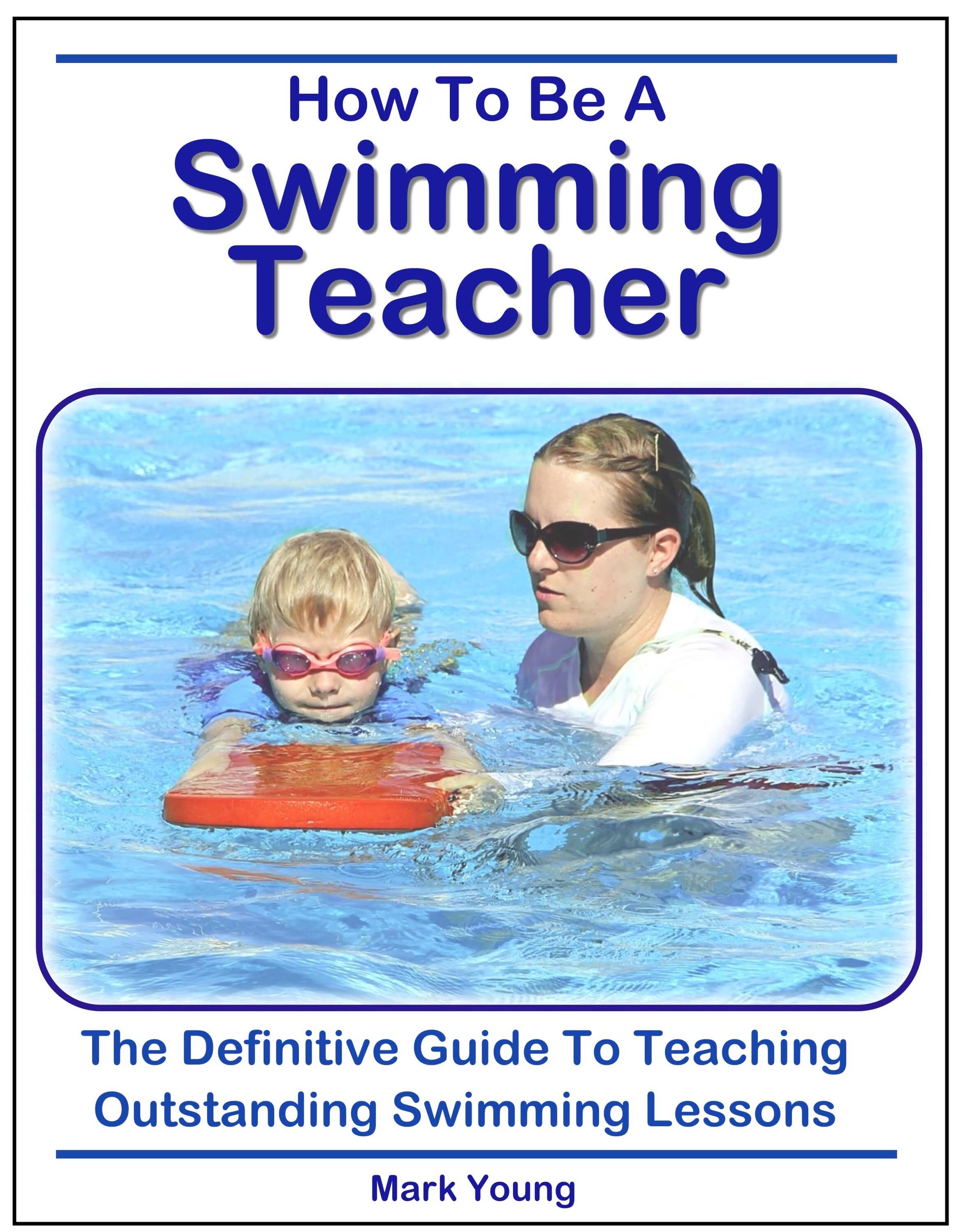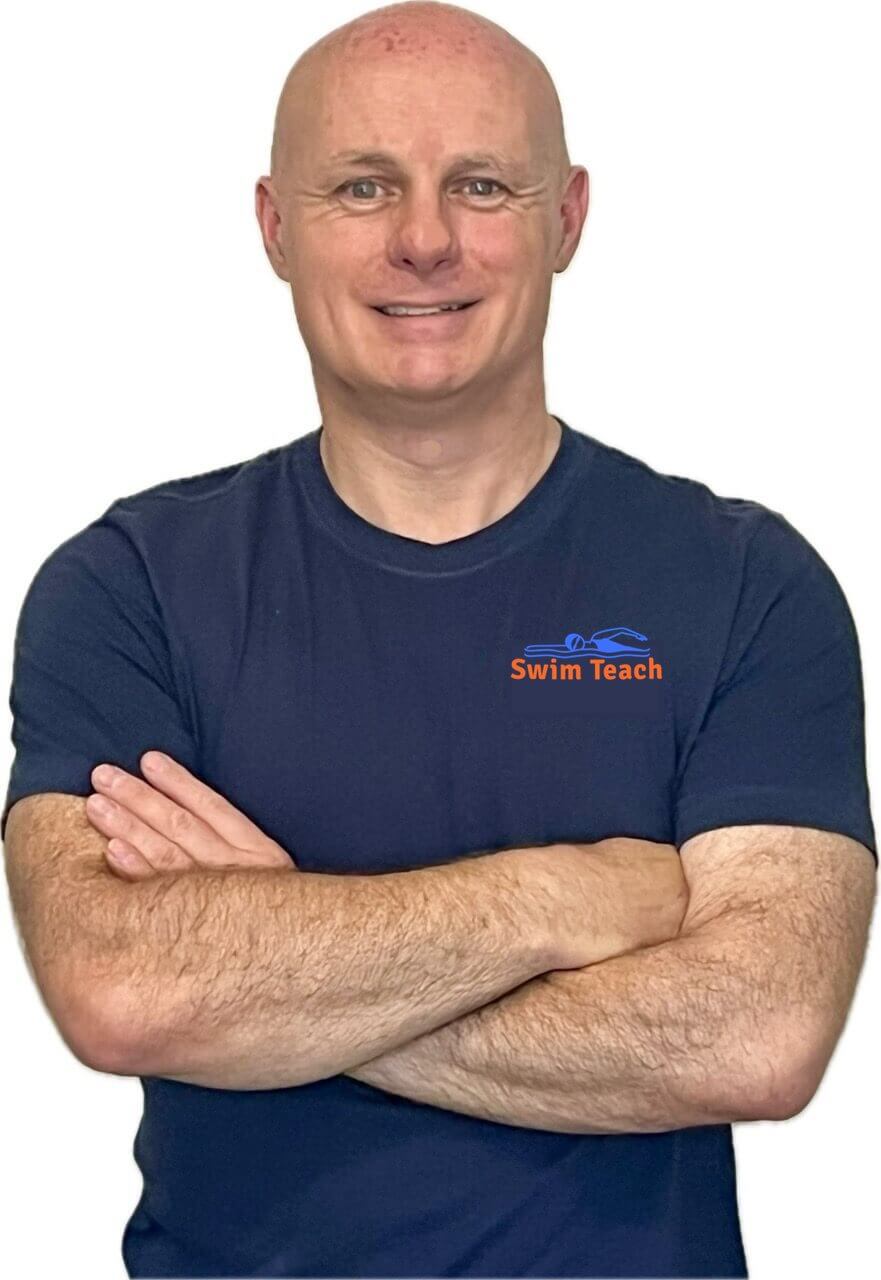- Swim Teach Home
- teaching tips
- How to Teach Swimming Lessons
- Difficult Time Coming Out To Breathe
Difficult Time Coming Out To Breathe
Do you have any tips for a swimmer whose body position is causing her to have a very difficult time coming out to breathe? Her head is very low in the water, almost completely submerged, and her whole back sinks in when I tell her to lift her chin. She lifts her neck too much. She keeps a good body position while flutter-kicking and has no arm movement.
If your swimmer is a child, then this is an age-old problem I have encountered many times.
Kids love being under the water, and it is usually a lack of arm pull that causes their heads to be so deep in the water, which leads to extreme difficulty in taking a breath when needed. Instead of pulling with their arms to assist with raising the head, they just attempt to lift the face out of the water.
The result is exactly what you described: overuse of the neck, a drop in back and body position, and no breath taken.
The lack of arm movement is caused either by a lack of coordination or general laziness, as it is easier to swim with arms by the sides just by kicking the legs.
This can be overcome by using some floats that will allow them to raise their head easily. Teaching the swimmer (even if your swimmer is an adult) to breathe regularly after a certain number of arm pulls will eventually train them to breathe and correctly use their arms to assist their breathing technique.
Breathing before they need to, rather than attempting to take a breath at the point of exhaustion, will help make breathing easier.
If your swimmer is using her arms correctly when swimming, it may be that her arm's pull is not strong enough or not long enough to help lift the body and head enough to breathe. Once again, a combination of exercises using floats or buoyancy aids will help achieve the correct technique.
My very popular book How To Be A Swimming Teacher contains over 80 separate exercises, each with common mistakes and relevant teaching points. You can download it instantly, print out the parts you need, and keep them with you on the poolside. Click the link below for more information.
How To Be A Swimming Teacher - The Definitive Guide To Teaching Outstanding Swimming Lessons. With over 80 fully illustrated drills. Click here for an INSTANT PREVIEW.
Don't miss out! Click here to grab a copy of my book.
Afraid to Breathe When Swimming
My student is afraid to breathe when swimming. She has controlled breathing and can stay in the water. Unfortunately, she is afraid to breathe in the water. What can I do?
It is very common for students to be afraid of breathing in the water, especially young children. Breathing in or on the water is unnatural and, therefore, can cause some anxiety.
By ‘breathe on the water’, I presume you mean exhaling or blowing out on the water's surface? There are a few possible reasons for your students’ fear of breathing on the water. The simple act of blowing bubbles causes light splashing on the face and under the nose, and if her face is out of the water, then this splashing could be into the eyes too. Also, the breathing action on the water can cause a tickling sensation under the nose which causes a feeling of water going up the nose, even though it is not.
You have to explain to your student that breathing on the water causes the water to tickle her nose and that it is completely normal, it will not do any harm and that it is something she will get used to. Then demonstrate it yourself so she can see for herself, and then encourage her to try with a very short breath.
You can get her used to light splashing in the face by playing a simple ball game, throwing and catching the ball. Allow the ball to land just in front of her, and the game will be a distraction from the fact that she is getting splashed.
Next, you can place a floating object in front of her, such as a toy duck or coloured ball and encourage her to blow them along as she approaches them. Once again, the toys will act as a slight distraction and will hopefully give her the incentive to breathe out on the water.
The main aim is to take the learning out of it and make it into a game or something fun; then, she will feel more comfortable about breathing on the water and will eventually think nothing of it.
Head Rotation When Swimming Freestyle
I teach adults to swim and am having problems with head rotation when swimming freestyle with a class of middle-aged men. Three of the four are having trouble with the head rotation.
I've tried numerous techniques with their kicking and body positions to correct the rotation for breathing, but I still find they take in quite a bit of water! I have worked on side kicking drills, standing drills in getting head position correct etc., but very little improvement.
Have you any other suggestions?
This is a common occurrence that I have come across myself teaching swimming over the years. And, just like you, I recall it was with middle-aged men.
The cause of the problem I found was not their lack of ability or understanding of the technique but a lack of flexibility in their neck and shoulders.
When they swim face down in a straight line, everything looks great. Smooth arm technique, streamlined body position and steady leg kick. The moment they need to roll the head to the side to breathe, the lack of flexibility in the shoulder joint and neck prevents a complete head movement and results in inhaling water instead of air!
My solution was to exaggerate the movement required. In other words, teach them to almost look at the sky when they need to breathe. You and I both know that, technically, this is incorrect, and the exaggerated movement will cause a disturbance in their body position.
However, after explaining to them about this ‘deliberate error’, they were able to understand and eventually, with practice, find a happy medium with a suitable head position to breathe.
Over time, some degree of flexibility can be achieved in the shoulders and neck from persistent practice, but in the meantime, I found it was pointless trying to get the body to perform something it was unable to do at the time.
With this slightly adjusted breathing technique, they could swim longer distances without taking in water, which meant they were achieving more from their swimming in terms of fitness and stamina.
We then changed their freestyle technique slowly over time to make their breathing more efficient or as efficient as it could be within their comfortable range of movement.
 How To Be A Swimming Teacher
How To Be A Swimming Teacher$19.99

I am a member of the Amazon Associates Program and I will earn a commission from qualifying purchases at no extra cost to you.



